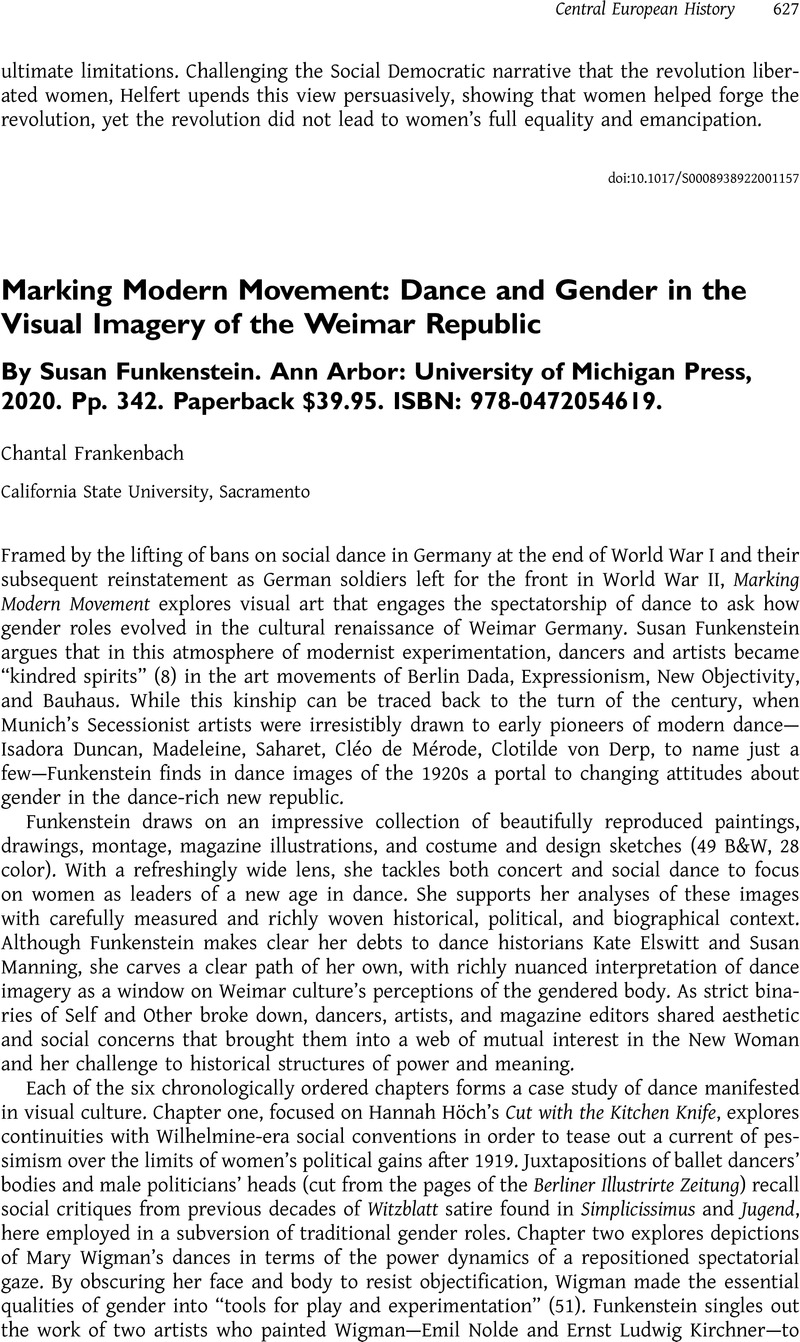No CrossRef data available.
Article contents
Marking Modern Movement: Dance and Gender in the Visual Imagery of the Weimar Republic By Susan Funkenstein. Ann Arbor: University of Michigan Press, 2020. Pp. 342. Paperback $39.95. ISBN: 978-0472054619.
Review products
Marking Modern Movement: Dance and Gender in the Visual Imagery of the Weimar Republic By Susan Funkenstein. Ann Arbor: University of Michigan Press, 2020. Pp. 342. Paperback $39.95. ISBN: 978-0472054619.
Published online by Cambridge University Press: 05 January 2023
Abstract
An abstract is not available for this content so a preview has been provided. Please use the Get access link above for information on how to access this content.

- Type
- Book Review
- Information
- Copyright
- Copyright © The Author(s), 2022. Published by Cambridge University Press on behalf of Central European History Society of the American Historical Association


